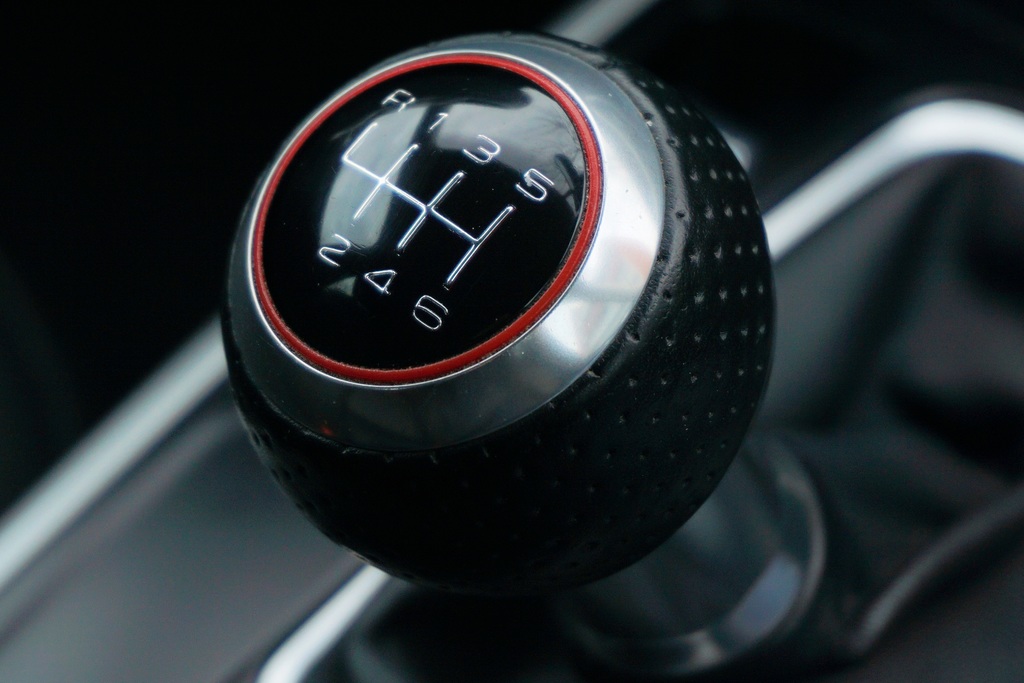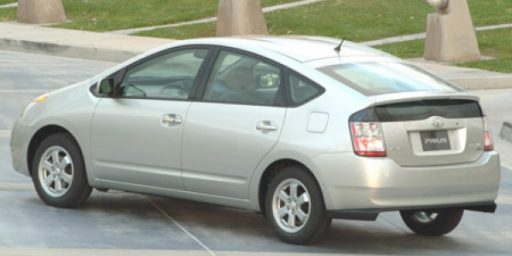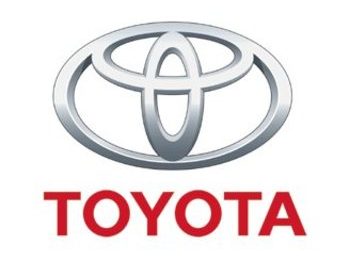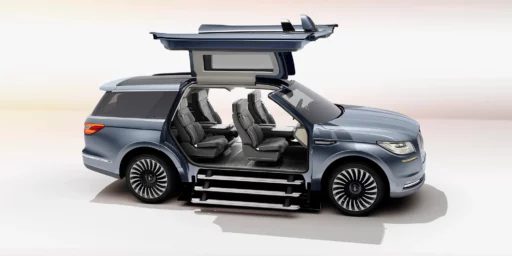Fee-For-Service Cars?
Will consumers put up with monthly fees on top of hefty sticker prices?

YahooFinance (“A monthly fee for heated seats? Car subscriptions are coming — whether Americans like them or not”):
Americans are more than willing to pay for add-on features for apps and monthly subscriptions like Netflix. But monthly fees — known as “features on demand” (FoD) — are now coming to their cars, which are connected to the internet and cloud in a dizzying number of ways. And in most cases Americans aren’t too happy about purchasing add-ons, especially when new cars are averaging nearly $50,000 off the lot.
A new study from Cox Automotive this week found that 75% of respondents agreed with the statement that “features on demand will allow automakers to make more money.” And 69% of respondents said that if certain features were available only via subscription for a particular brand, they would likely shop elsewhere.
[…]
Recently, BMW caused a massive stir when it introduced subscription pricing for heated seats in its cars, when the option wasn’t purchased originally. The rub here is the actual heated seat is built into most BMWs.
Though this feature was only turned on in international regions and not the US, many BMW fans and auto enthusiasts were incensed at the prospect. The car comes with the feature built in — “Why should buyers pay just to turn it on after the fact?” was the most common complaint.
While automakers like Tesla have been utilizing subscription or features on demand for options like Autopilot and the more advanced full-self driving (FSD) beta feature, these are software add-ons that enhance the car, but aren’t really physical features that were sitting dormant in the car (though one could argue the chips, processors, and sensors on a Tesla needed for autonomy were already paid for by the owner).
Mercedes waded into the mix recently with news that it would allow owners of EQ-series EVs to unlock more power through a subscription feature activated through the Mercedes app. For instance for the EQE 350 4MATIC EV, Mercedes notes prices of $60/month, $600/year or lifetime cost of $1,950 to unlock an additional 60 horsepower (and improve 0-60 mph times to 5.1 seconds from 6.0 seconds, which truth be told is a significant boost).
It’s another interesting move from Mercedes, as the car theoretically is capable of producing the enhanced power, but Mercedes has essentially “detuned” the motor from a software point of view. Usually this is the case for the base trim or lower-level trims in the model line, like in this case the 350 4MATIC trim of the EQE series.
Toyota was flagged by users on Reddit for making owners pay a subscription fee to unlock certain features on the Toyota app, namely the ability to unlock the car doors and remotely start the vehicle if need be. Again, the feature is already baked-in to the app and the car itself, but Toyota would like owners to pay to activate the feature.
For its part, Toyota defends the practice and says it is actually offering a better deal for owners as the products mature.
“Previously, our Connected Services plans were priced a la carte. For example, Remote Connect was $8 per month and Drive Connect – our Intelligent Voice Assistant and Cloud Navigation feature – was $16 per month for a combined total monthly price of $24,” a Toyota spokesperson said in a statement to Yahoo Finance. “The new plan featuring both services is now priced at a lower $15 per month cost. We have also introduced a trial for our Safety Connect emergency telematics service which is now included for up to 10 years on every vehicle featuring our new multimedia system.”
Toyota says many of its models have one year trials, and many Lexus models feature three year trials to introduce drivers to the features and benefits of the company’s Connected Services before a subscription plan is necessary.
While the whole notion of including features on a car and then charging buyers an additional fee to turn them on strikes me as weird, it’s hardly new. For years, many new vehicles have come with satellite radio (SiriusXM) or emergency services (OnStar and the like) installed. After a free trial, those services shut off unless a fee is paid.
Still, features like heated seats seem to be in a different category. SiriusXM and OnStar are at least actual services that have to be staffed. This is simply charging to enable an already-installed feature that should work indefinitely on its own. Then again, Tesla famously charges a hefty fee to activate “Ludicrous Mode”—which is built into the car. They’re literally spending extra money to disable included features in hopes that customers will pay to have them unlocked.
Why automakers are interested in this model is obvious. But what about consumers?
Whether Americans are willing to play ball here and pay the fees is another story. Many already reluctantly do (this reporter a couple years back paid an additional fee to unlock Apple CarPlay on a used-car purchase), as some must-have features just need to be had.
“I don’t think [features on demand] is going away, and also as the cars get more and more sophisticated, get more and more functionality, then it just feels like a natural progression,” Edmund’s Weaver says, also noting he too has gotten used to these add-on features, and their costs, for his personal vehicle.
Many years back, software companies turned to subscription models for products that previously were one-time purchases. For example, I’ve subscribed to Office365 and its variants for a long time. While the change was frustrating at first, we got used to it because it meant that we at least got the most up-to-date version of a given product.
I’m skeptical this model will work for the automobile industry. A decade ago, for example, I’d have likely been willing to pay a smallish annual fee to ensure that my infotainment system, especially the built-in navigation, was current. But we’re at the point where Apple CarPlay and Android Auto have made most manufacturer software defunct. Most of us would rather just plug in our phones for these services.
Obviously, the phone is unlikely to displace the seat heater. But I suspect YouTube will be filled with videos showing how to un-disable the feature.






That was my first thought also. Aftermarket software will be available just like aftermarket audio systems.
We have a 2015 Subaru Outback. I remember the first time I took it in for a major tuneup and was offered to have the nav system updated for a ridiculous price. I didn’t bite. I already have 3-4 nav apps on my phone. Didn’t need theirs.
It’s a software world. It costs nothing to toggle the bit that tells the software that the heated drivers seat feature is disabled. And it’s almost certainly cheaper to assemble cars if every drivers seat is capable of being heated — once the bit is toggled to on — than to mix-and-match. Back in the early 90s, I think it was, Honda switched production so that every interior was gray and every seat had cloth upholstery. If you’re buying nothing but gray cloth seats, they’re cheaper than vinyl.
In an extractive economy, more means of extraction will always come up.
This is a crucial difference. Back in the day you bought Office 5.2 and that was it. If you wanted Office 6.0, you had to buy the whole software package all over again. Not to mention you had to drive to a software or office supply store to get the CD pack, or the floppy stack even.
If a car was sold on subscription in the same vein, you’d get an updated, improved model at variable intervals of time. I think at some point that was called “leasing.”
When John Deere pulled somewhat similar shenanigans on their tractors that cost upwards of a quarter-million right out of the gate, farmers just turned to hacking the devices–usually for productivity reasons, but sometimes to play doom.
This led to a fairly significant SCOTUS decision regarding “Right to Repair” though that is a bit different than what we are discussing here.
Rent seekers.
New Jersey has already outlawed that scheme and other states will as well. Right-to-repair, is gaining momentum and turning on those bits will probably fall under those laws.
In the early oughts, Land Rover went to all sorts of computer controls for suspension and other functions, the response among enthusiasts was to hack the body computer and engine management system so to improve the vehicles performance off road. Today, for about $1200, you can buy a software package for your phone or computer that allows you to change virtually all settings. Changes to the engine management system are illegal, but the rest may void the warranty, if you make a claim with restoring the stock settings.
Kinda sad that the legal ability to access features blocked by encryption is determined by the Librarian of Congress…
Oh, I see you’re flying for a week-long vacation. Well, we can transport your suitcase too. $40/bag. We’ve also got some food to sell on the airplane if you’re feeling peckish on a five hour flight. And if you’d like to ensure your spouse and children can sit together, we can arrange that for a mere $50/ticket extra charge which unlocks the seat selection menu on our reservation website.
Meh. 20 bucks and a case of beer to the technician working on your car and good to go.
Steve
This particular “feature” will, undoubtedly, be explained as the same as paying more for a bigger engine, just as auto buyers have always done. I don’t think that most purchasers will choose monthly fee over a lifetime charge–although on an EV, that might be the more economical choice.
Overall though, this will become yet another conspicuous consumption phenomenon to go with paying extra for all access sports services, paying overcharges for “premium” programming on already supposedly “+”sed out streaming services, and the already mentioned MS Office 360 which (at least on the pitch they made to me) doesn’t really include all the programs in the suite, some are still add ons. If I were a gambling man*, I’d bet that lots of people will be saying “yeah, it costs me extra, but it’s really worth it” 1o (or fewer) years from now just as friends of my parents, who lived on top of the hill and got great broadcast connectivity from their antenna, told my parents the same thing about satellite TV back 1963 or 64.
*The fact that I’m willing to make this type of WAG about this question probably explains why I’m not a gambling man, though.
It’s conversations like this that make me love my customized 1963 Ford Fairlane Coupe so much more.
I can take the whole car apart with a crescent wrench, flat head screwdriver, and a pair of pliers. Literally. And it has heated seats from a BMW 330CI.
I run all of the entertainment systems through an iPad mini hard wired into the dash with a Verizon internet hotspot hard wired into the trunk.
Yay for old and new technology working together.
Heya, it’s your kinda friendly car biz guy here. The Mercedes thing is analogous to the engine upgrades of old, but the rest is a bit garbage in my mind. Those that point out that some of this is to bring down costs of manufacturing are absolutely correct along with a side of rent seeking. The actual cost of heated seats are a bit less than 100 per vehicle when put in in the factory. Heck, when they are installed by a third party, they cost between 200-300 including labor. It would be better for the consumer to just have heated seats across the board and hit the sticker for 200-300 than this nonsense. Quick reminder that SAAB had standard heated seats all the way back in 1984, but I digress (as usual). Same with Toyota’s nonsense in their app.
Fun fact, the main difference in the turbo 4 engines in most VW group vehicles (VW, Audi, Porsche) in regards to power output is the onboard software. In the US you can get a software tune by APR that will put it one level higher than what you bought it at initially and it will not affect your warranty if installed by an APR VW group dealer. Costs about 1800 bucks as if two years ago.
BTW with the prevalence of leasing and how much data that is logged on the onboard systems, good luck with jailbreak solutions and warranty work or lease turn ins, even if reverting to normal before attempting either.
@Scott: FWIW, we are looking at looking at this model for the next generation equipment we are developing. Yes, all units already include the “hardware” but that only means they have the computer horsepower necessary to run the extra software. Think about it. You probably have a powerful computer in front of you. Do you expect that you should get all the software it is capable of running for free? In our case, about 2/3 of our customers don’t need these extra features and there are lots of competitors out there that don’t have them. If we were to charge everyone the cost of our development and profit, it would raise price too high for those that don’t use them.
But my real point is that when we put this software enablement in, we will know if someone violated their agreement and turned it on through shenanigans. All of the units will need to be put online at least once a year during calibration, if not more often. We would detect it then. I’m sure cars work the same way. Heck, I get an email report from Subaru every month recounting the state of my car.
Two reactions: a few years ago I actually lost use of my Onstar because the GM had to return the relevant bandwidth to the FCC. All I wanted it for was remote start and they simply can support it.
I ran into an issue recently where my son pointed out a really good album, which I wanted to hear, but realized I had no way of getting a copy without joining a subscription music service and, even then, I would not own it – I would just have access so long as I subscribed. My reaction to all of these subscription services is “I don’t want a relationship, just the product.” Brave new world.
Will customers even tolerate when water intrusion on the rearview camera module kills the radio and havoc? Or like Mercedes, a failed rear wiper module bricking the car? Or like is being found on Lincolns where a telematics module associated with on of those “trial then fee” services starts killing the battery. Or where the telematics module is no longer supported as it is 3G and then starts killing the car.
Mfrs have reached a point where they can’t design reliable cars. But instead of oil leaks in 18 months due to poor quality in manufacturing, their cars are going dead due to poor network/module design.
@MarkedMan:
False equivalence.
I have a reasonably powerful computer in front of me. It has a earphone jack. I’m not being asked to pay a subscription fee to use the earphone jack (this is what’s happening with the cars). If I want a certain audio program to listen to music or use a VoIP phone, that’s an extra service and I would expect to pay for it.
I do not expect to be charged a monthly fee to activate the audio jack itself.
For services like satellite radio or OnStar, those are services that incur costs to run (and provide constant content and/or services). It makes sense to pay for the content and services. It would not make sense to have to “rent” the antenna that each one uses. The material cost has been included in the vehicle, and use of them incurs zero cost to the manufacturer.
@Joe:
Pretty much for most music, you can find it on YouTube and can listen to it before buying. The bit rate isn’t great 192KBS, but for computer speakers it is enough. If someone suggests an unfamiliar artist to me, I’ll check YT first and if I like them, I’ll buy the CD or in rare instances, I’ll buy it via download, if I can get it in a FLAC (lossless) format.
@JKB:
Wow, you must be younger than I thought. You could not have possible owned an American car built in the 70’s or 80’s. Now there was absolute junk! I still can’t bring myself to buy a car built by an American manufacturer.
@MarkedMan: I had a ’73 AMC Hornet. If you got one new, it was advised to go around and tighten as many bolts as you could.
@Mu Yixiao:
Sounds about right. It’s penny ante nickle and diming (heh) and would piss me off to no end.
I suppose this is one way of looking at it. Here’s a different way. Products, whether they are hardware, software, firmware or some combination, have development costs. Companies sell products and that mean they expect a return on investment. They can either charge everyone for their ROI or just the people using the feature.
There is also a way hardware and software/firmware differ: For the most part once a purely hardware feature is sold there isn’t any need to redesign later on for the customers who have already purchased it. In your example, the antenna will continue working until it is broken. And even when a change causes the system to break (think of the shift from analog to digital TV last decade), no one would expect the car company to go back and modify the antenna for free. But software/firmware needs to be constantly maintained. I can tell you for a fact that maintaining software for obsolete products is not high on the list of development priorities in any company. It doesn’t make any money, and it costs a hell of lot, both in money and time and usually by exactly the employees that you want working on the-next-big-thing products.
Some years ago I was at a conference on locking down hospital networks and battling security risks. Much to my surprise, the hospital administrators wanted the applications they supported to be hosted by the developers rather than on local machines and they were more than willing to pay for that. Why? Because they had a frickin’ nightmare going on with old programs that only ran on obsolete versions of Windows with a specific service pack. They couldn’t upgrade or install security patches, leaving big gaping holes in their network.
My point is that even though I agree with you and paying a subscription for a seat heater pisses me off enough that I wouldn’t buy the car, I’ve been around long enough and seen enough changes in business models that I recognize it might become an acceptable norm, and ten or fifteen years from now I might take it in stride.
@Joe:
Consider Audible and Scribd.
The basic Audible subscription is about $15 a month. this gets you one credit (good for any audiobook in the catalog), plus anything in the Audible plus catalog (it includes podcasts and some shorter books). But you don’t need a subscription for audiobooks. You can buy them at retail price. So if you want just one audiobook, you can get it anytime whether you’re subscribed or not.
The one monthly credit often is a good deal. A book that retails at $30, say, can be had for a credit. There are occasional 2-for-1 credit sales, too; that’s two books for one credit out of a limited sale selection.
If you cancel the subscription, you still get access to any books you’ve paid for, be it with credits or cash. But you lose any unused credits (I just checked this yesterday). You also lose access to any Audible plus titles you might have downloaded.
Scribd charges around $9 a month. This gives you access to their catalog of audiobooks, ebooks, magazines, and documents. You do need a subscription to access anything. If you cancel, you lose all access to everything.
I’m subscribed to both. Usually when I look for an audiobook, I search Scribd first. Sometimes they’ll have it, sometimes not. If not, I search Audible.
Audible has several exclusives not found elsewhere. And also a lot, but all, of the Great Courses catalog (audio only). They also have a larger catalog than Scribd.
@Thomm:
This is my concern.
Overall, I hate this practice of trying to squeeze as much out of a buyer as possible through this sort of nonsense. JUST LET ME PAY FOR THE HEATED SEATS. These aren’t specialized formats that require frequent updates or human interaction. They are SEATS.
@Jen: yup. As you can tell from my previous comments regarding this, I am not a fan. Part of my job is building value to justify the price being asked and such practices basically shoot me in the knee and ask me to run a sprint. I have no issue with one time fees for power unlocks, especially if done at time of purchase so it can be rolled into either the finance or lease payments. This nickle and dime crap for things that have come to be expected in certain levels of vehicle are nothing more than rent seeking pushed by MBA penny pinchers in corporate accounting, not engineers or customer demand.
I find it difficult to imagine a significant number of people refusing to buy the car they want because it has such features. They will be convinced they can “protest” by not subscribing to the things they don’t want so I think this will become common.
Resistance is futile….
@Thomm:
I don’t disagree with any of this. And ultimately, practices that anger your customers are bad for business. I was just trying to point out that the subscription model has its advantages too, especially as systems become more and more complex and more and more firmware dependent. If developers need to support something for years and years there has to be a way to pay for that.
@MarkedMan: I think that you point out the bigger question. Will they continue to support after 10 years? 20? 30? They don’t support computer OSs or computers that can’t be upgraded.
@MarkedMan: yeah…that’s kind of BS tho as these technologies are very mature ones though. Remote start was a standard feature on mid trim GM models when I started in the business in 2009. As mentioned, SAAB had standard heated seats in the early 80’s. Why is this stuff any different now? Is it because it is now done through a whiz bang touchscreen (seats) rather than a four position switch, or a fancy ass app rather than a physical key fob (remote start)? C’mon…this is pure rent seeking by replacing physical interfaces with virtual ones and then charging you for the privilege of using them. Or do you think you will be getting an over the air update on the functionality of your heated seat because you send them money every month?
@BugManDan: Exactly. I can go into a 1950s car and tune the AM radio to the Orioles game tonight and it will play. It is extremely unlikely the same will be true of a sound system for a car you buy today. Without updates it might not work with whatever replaces the iPhone and Android phones. It’s all very well to say GM or BMW should keep incurring the cost of those upgrades for the next several decades but without an economic incentive that support is going to be spotty at best.
And that’s just upgrades. The obsolescence question is even bigger. When these new car manufacturers start to get weeded, given the proprietary nature of all the controls and the small aftermarket business of an automaker that size, will you be able to get a replacement user interface 5 years after they are gone? 10? 20?
A colleague just spent a fortune on a Rivian because the resale value is so good. Will it be so good if they go belly up next year?
@Thomm:
Yes. The remote start on a 1990’s car was a pretty simple thing, and the technology was fairly universal and widely shared, so even today you can buy replacement fobs. Quite frankly, once they were designed and developed GM didn’t need to do anything but manufacture them and keep a couple of simple programmers alive, which the aftermarket quickly copied. There are cars today that don’t even have a stick-it-in the-ignition key! Forget remote start, will you be able to start it at all if the company goes out of business and you need a new key?
In truth, it can both be gratuitous rent seeking AND a legitimate source of concern on the business model.
This is something that has fully permeated the major game developer/publishers. The “live service” concept is something I expect to see pushed into other aspects of our life. The push for ever more profits to appease stockholders makes this an inevitability. Since the vast majority of what we consider brands are actually owned by a handful of mega companies there’s not much in the way of competition. So why bother providing more features to compete when you can just charge subscriptions for them and not lose any market share?
BTW Auto manufacturers know that people will try to jail break their cars. That’s why they are pushing for high levels of encryption on the CAN bus and such. The makers are pushing the encryption as a safety measure to prevent hackers from taking over your car and such stupidity (air gapping should be a thing to avoid that). The real reason is to prevent people from accessing the CAN bus backend to modify things.
The CAN BUS designs are a fucking mess for most cars as they allow people to access stuff they shouldn’t be able to access (such as starting your car) simply by removing a headlight bulb or such…
At a certain point, you just have to set the dealerships on fire.
I have decreasingly little tolerance for people who want to add hassle to my life.
This may be an area that’s ripe for regulation.
A law could be passed that forbids charging subscription fees for car features like heated seats, engine modes, etc., but allow such fees for actual services like Onstar, regular remote service/diagnostics, entertainment options, navigation, etc.
Car manufacturers, and for that matter makers of other products with diverse features, could still charge for these features, but only one time when the product is sold.
If they’re dead-set on charging subscription fees, then let them do so only on leased vehicles. These, at least, remain the property of the manufacturer.
@Scott: I had an Olds Omega. (Long story about it being the smallest thing I could conveniently get under an employer supported lease program.) Called it the Omegrot. It was an Omega “Brougham”, except the Brougham badges fell off within months. I kept a jar in the glove box for screws that fell out from under the dash.
I suspect I might differ from the norm.
I dislike having to have a car. I kinda resent it. I like cars. Vehicles are cool, but the arrangement where having a vehicle is basically a prerequisite for living in a place is fucking bullshit. European cities get along fine where car ownership is entirely optional and only for rich people. Central NYC does it.
I existed for at least a decade where my options were bus or taxi. I got along fine where bus service and the very occasional taxi and my own two legs did me fine. That is my baseline.
My current vehicle is fast approaching the end of its viable lifespan. And I kinda don’t really want to expand it. My first thought is electric for a replacement. 99% of my trips are short hauls. And then few and far between. I do maybe 50 miles a month.
If I need to drive a long distance I rent.
I don’t exactly need a car. If I choose to it will most likely be electric.